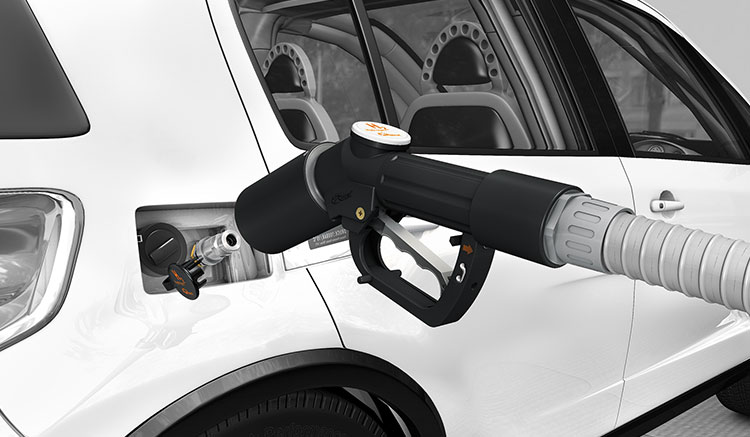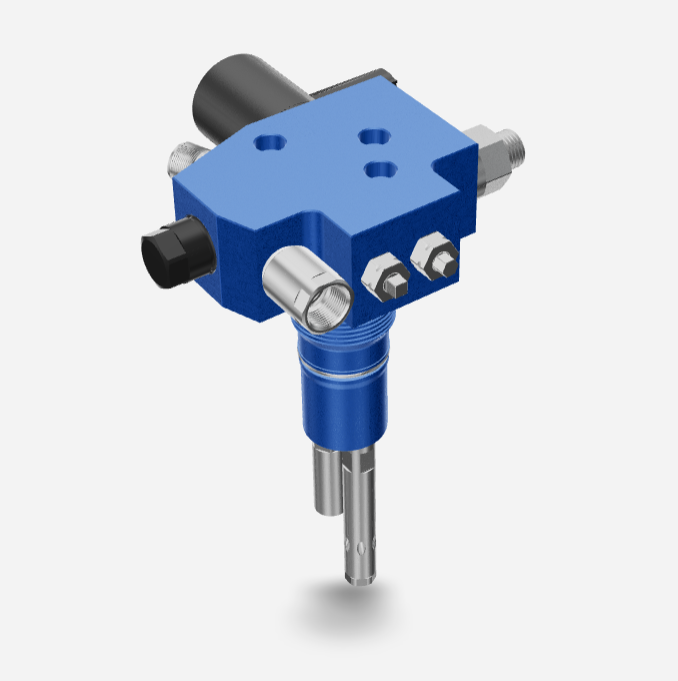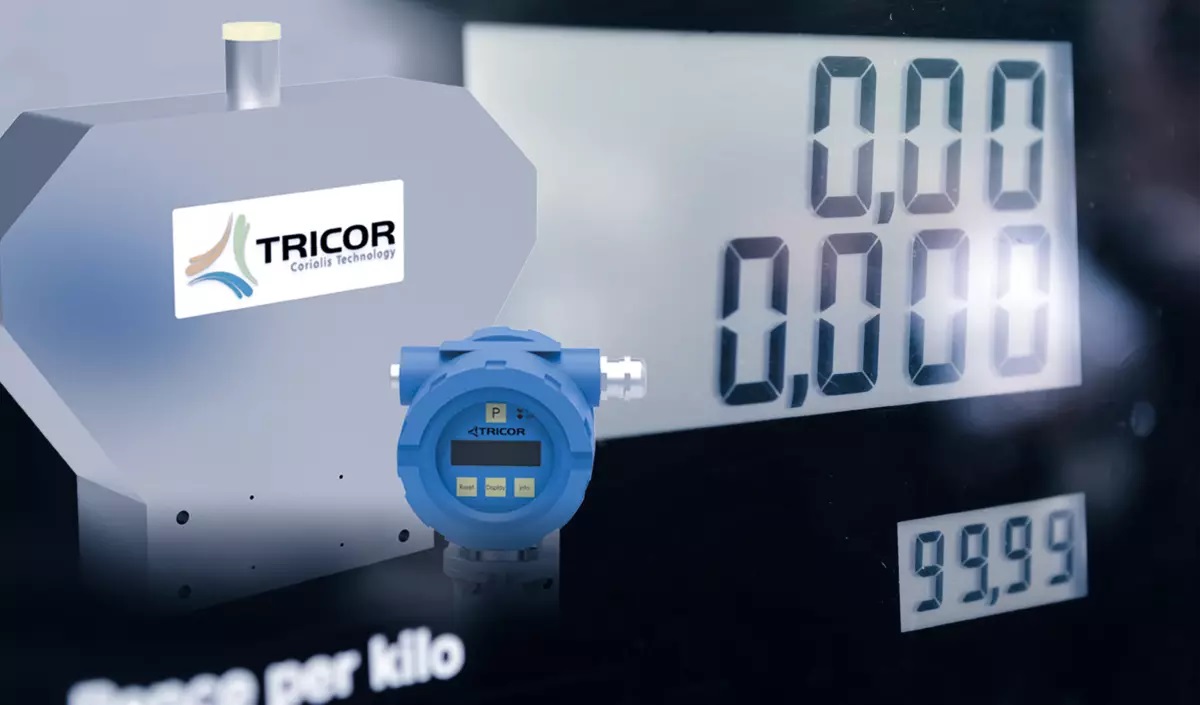700 Bar hydrogen refueling
Development of hydrogen fueling of vehicles
Together with OEM manufacturers, we have been developing hydrogen storage and distribution systems for vehicles for many years. That has a long history and a promising future. That history of using alternative fuels began in the early 2000s at Teesing with the development of systems for CNG. Later, hydrogen was added.
The history: refueling CNG
Using CNG as a fuel was promising: it is clean and can be refueled at home from the natural gas supply. For heavy vehicles and short distances, it was an ideal fuel to reduce emissions. The system has been in reasonable use on city buses and forklifts. But the lack of range and lack of infrastructure (fueling stations) meant it never really caught on.
Teesing made its contribution to the development by supplying filling nozzles to gas stations and receptacles on vehicles. But it didn't stop there: we also developed and supplied boosters: compact boosters for homes or businesses that raised the pressure of the natural gas line to the pressure needed for storage in a tank in the vehicle. At the time, Teesing also had such a "filling station" at its own premises, and company cars ran on CNG.

Illustration: a WEH tank nozzle and receptacle. Teesing and WEH are market leaders in Europe.

Illustration: An on-tank valve developed in a collaborative effort by Germany's Poppe + Potthoff and Teesing.
Refueling of hydrogen
The use of hydrogen for vehicles started with hydrogen as a fuel for a regular internal combustion engine in the BMW 7 Series in the year 2000. It took until 2014 before the first public hydrogen refueling facility opened in Rhoon. Teesing supplied the WEH tank nozzles and hoses for that purpose. It is still the case that you always hold a Teesing/WEH connector in your hands when you refuel hydrogen somewhere. And the same goes for CNG, by the way.
Passenger cars use hydrogen primarily to power a fuel cell that is an alternative to a battery. So those are electric vehicles. Our biggest customer is China's Sinopak, which is currently building 1,000 hydrogen fueling stations and has already built many of them.
The growth we foresee besides the frontrunner China is mainly USA and Canada for passenger vehicles. In Europe, the use of hydrogen focuses mainly on heavy vehicles and stationary systems.
Furthermore, Teesing supplies hydrogen tank nozzles to companies for refueling ships, forklifts and trucks.
Teesing's patent on hydrogen filling technology
Vehicles currently refuel hydrogen at a pressure of about 350 bar. It is interesting to increase that pressure to 700 bar because it increases vehicle filling speed and range. This places quite a few demands on the equipment at the filling station and the pressure regulators in the vehicle. The hydrogen is first pre-cooled for this purpose. This is also already done to a lesser extent in the current 350-bar filling stations.
Teesing has developed a system (PUSH - Pressurizing Using Hydraulics) that does not require "pre-cooling." The cylinder is first filled with water at a pressure of 700 bar, then the water is displaced by introducing hydrogen gas into the cylinder at 700 bar. Patents have been issued in several countries for this PUSH principle.
Teesing's technology has passed homologation up to level TRL4 . In development, we entered into cooperation with Tongji University Shanghai in China.

Illustration: Coriolis mass flow meters from Tricor we apply in H2 dispensing stations for vehicles, both at 350 bar and 700 bar.
700 bar hydrogen systems in vehicles
Hydrogen is delivered at a standard pressure of 350 bar (for buses, trucks, forklifts and small passenger cars) and 700 bar (larger passenger cars). On average, about 4 to 5 kg of hydrogen is delivered to passenger cars and about 20 to 40 kg to buses or trucks.
According to the widely used SAE J2601 (Fueling Protocols for Light Duty Gaseous Hydrogen Surface Vehicles) and J-2601-2 (Fueling Protocol for Gaseous Hydrogen Powered Heavy Duty Vehicles) protocols, there are three different refueling options, each with its own maximum refueling rate and need for pre-cooling. Slow refueling allows a maximum filling rate of 30 g/s (1.8 kg/min), normal refueling goes up to 60 g/s (3.6 kg/min) and fast refueling allows a maximum filling rate of 120 g/s (7.2 kg/min). However, it is noted that the average filling rate is usually lower, and depends on several parameters including the volume of medium pressure and high pressure buffers at the station and the frequency with which vehicles come to refuel.
For delivery of hydrogen at 350 or 700 bar to passenger cars, among other things, filling guns are used with an internal diameter of 4 mm in combination with a delivery hose with an internal diameter of 6 mm. For delivery of hydrogen at 350 bar to buses and trucks, filling guns with an internal diameter of 8 and 12 mm are used, among other things, in combination with a delivery hose with an internal diameter of 6 mm.
Finally, hydrogen refueling stations typically follow the protocol SAE J2799 regarding hardware and software communications between the vehicle and the dispenser/station (SAE J2799 - Hydrogen Surface Vehicle to Station Communications Hardware and Software).
A hydrogen stack has an operating pressure just above atmospheric pressure. A hydrogen tank therefore has a pressure regulator that brings the pressure down to about 10 bar, after which a second pressure regulator brings it down further.
Such a pressure regulator is called an on-tank valve and not only brings down the pressure, but also has various safety systems and systems to measure pressure, temperature and flow. In addition, the regulator must provide functions to depressurize the system for vehicle maintenance.
So an on-tank valve is a complex piece of engineering. And with a working pressure of 700 bar, it is even more of a challenge.
Several manufacturers are developing them, but until 2024 there are no systems on the market that are truly leak-proof and fail-safe at 700 bar operating pressure. In cooperation with Poppe + Potthoff, however, Teesing has developed an on-tank valve that will be on the market in 2024.
Germany's Poppe + Potthoff specializes in vehicle systems for extremely high operating pressures. Common rail diesel sytems, for example, also operate under a working pressure of around 1,500 bar.
Liquid hydrogen for mobility
If we want to grow to a really high energy density, liquid hydrogen is an option. That high energy density is required if we want to power heavy vehicles, ships and aircraft with hydrogen. This means a cryogenic system, where although the pressure is not high (a few bars), the temperature is incredibly low, similar to liquid nitrogen. This type of system is being developed by Airbus, among others. The weight of the hydrogen tank is therefore a challenge. The solution direction being sought are tanks made of carbon fiber laminated with aluminum or aluminum welded double-walled tanks with vacuum insulation. To keep the weight of the entire system as low as possible, the piping and fittings are also made of aluminum. Teesing is the only supplier who develops and supplies this type of couplings. For the development of this type of system, Teesing is collaborating with the Delft University of Technology, Aerospace to arrive at a protoype aircraft that can fly from Amsterdam to London (AeroDelft).

WE MAKE YOUR TECHNOLOGY WORK
NL - Tel. +31 70 413 07 50
USA - Tel. +(1) 973 383 0691
CN - Tel. +86 (10) 56865822/56865835
TW - Tel. +886-(0)3-5600560